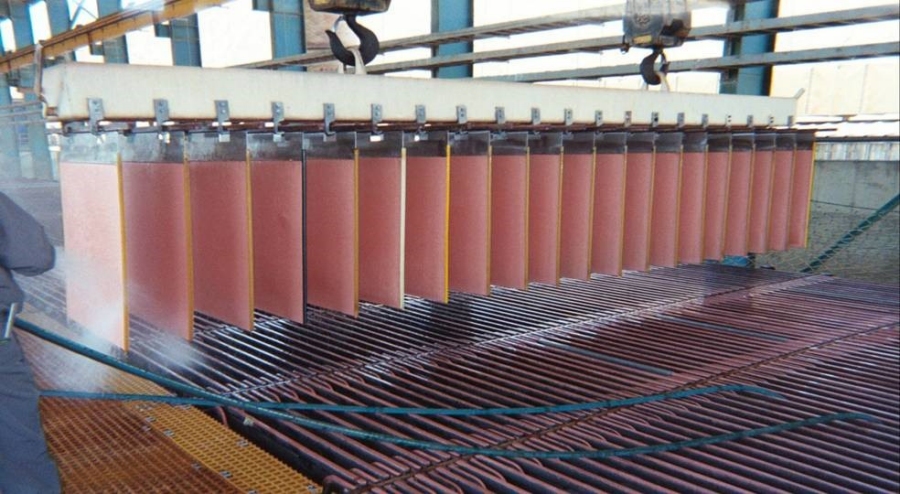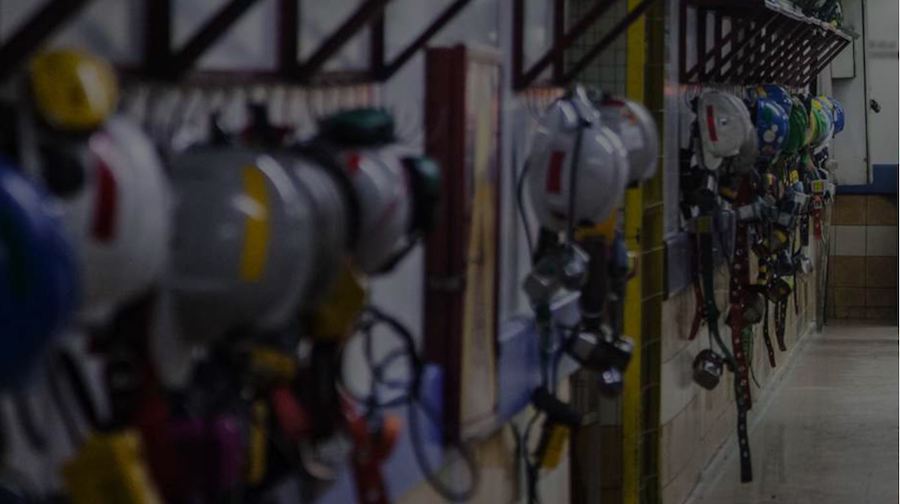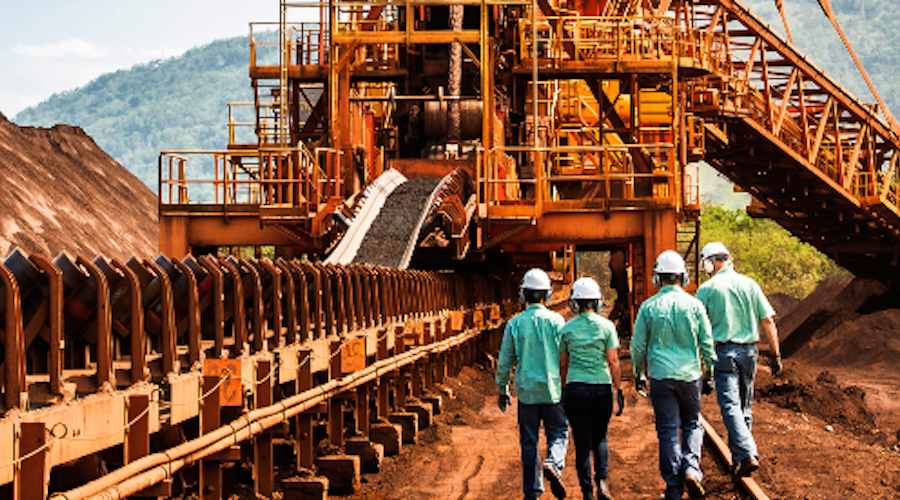Copper SX-EW – What are the options?

Since it burst onto the world’s metallurgical scene in the late 1960s, copper SX/EW has gone from strength to strength and has seemingly blitzed all comers. But it does have some drawbacks, which opens up opportunities for possible options.
The attractions of copper SX/EW are now well known – it is highly selective, can treat a wide range of copper concentrations, produces high purity cathode at site, is suitable for both large and small projects, and can be successfully applied by “rookie” companies as well as majors. However, there is another side to the coin. For example, the initial capital cost is relatively high. Also, the EW step is power intensive, which makes the economics sensitive to the unit power cost. This can have a decisive effect in remote locations where power is generated at site. A less obvious issue is the regeneration of the sulphuric acid associated with the copper extracted from the leach solution. While this is usually regarded as a major advantage, it is not always true. For example, if the leaching circuit is acid generating, as can happen in leaching of sulphides, some of the recycled acid may have to be neutralized. This requires a neutralizing reagent such as limestone, and poses the problem of how to avoid losing associated copper in the acid bleed stream. Acid regeneration can also be a problem for ammonia leach systems for obvious reasons.
So, what are the options?
Direct EW
This was the traditional route to cathode copper for high copper solutions from vat leaching and roast leaching operations prior to the advent of SX. Drawbacks included problems with impurities such as iron causing low current efficiencies and inferior quality cathodes which incurred a cost penalty. In recent times, direct EW with conventional cells has found limited application for high grade leach solutions with minimal impurities. However, the innovative EMEW cell(1)(3) developed by Electrometals in Australia, which employs a tubular configuration and a non-lead anode, can operate on more dilute impure solutions due to the high velocity tangential electrolyte flow over the electrode surfaces. To date, EWEW cell have been commercially applied on a relatively small scale to bleed streams and waste solutions.
IX/SX/EW
Was developed and commercialized by Iontech Engineering Ltd, Bulgaria, and successfully commercialized on a relatively small scale at Bucim, Macedonia in 2012 to treat 650 m3/h of dump leach solution containing
0.5-0.6 g/L Cu and produce 2,400 t/a cathode(2). The IX system utilizes fixed bed columns which are self-cleaning by change of solution flow direction. Claimed advantages include suitability for low and variable copper levels, trouble free winter operation as IX is unaffected down to 0°C, significantly smaller SX extraction plant with reduced footprint, significantly reduced crud formation and organic losses with cost and environmental benefits, and reduced organic carry-over to EW. The capex is reported to be similar to SX/EW, with lower opex.
IX/EW
Has been commercially applied to date for waste solution clean-up and purification applications, for example in conjunction with EMEW cells(3). Advantages include lower capex, elimination of organic carry-over which can be a process or environmental issue, and ability to treat unclarified solutions or slurries using resin-in-pulp. A number of organizations are developing copper selective resins for leach solutions and acid mine drainage. IX systems for clear solutions, unclarified solutions and slurries are widely used especially in the uranium and gold industries. New systems include Resin in Slower Settling Solids (RIS)(4) developed by WINRIS, South Africa, and Resin in Moisturised Mix (RIMM)(5) by InnovEco, Australia.
SX-Copper Sulphate
The main advantage is the replacement of the capital and power intensive EW step by copper sulphate production from the SX loaded strip solution. However, the cost of the acid consumed to form the copper sulphate offsets the savings in power cost. Crystallization is generally used, as at the Freeport Sierrita Operation, Arizona(6), and at the former Cockle Creek Operations, NSW, Australia. A lower cost method, which has been practiced in Chile, is to precipitate copper sulphate by “salting out” in the SX stripping mixer-settler. Copper sulphate uses include animal feed supplement, fertilizer, flotation reagent and wood preservative. The process has been limited to relatively small scale operations governed by market demand.
One possible application is for a site with a number of scattered small ore deposits. Each deposit could have a satellite leach/SX/copper sulphate facility feeding a central EW plant. Another possibility is to transport the copper sulphate to an EW plant at another location with lower power unit cost. The disadvantage is the problem of recycling the sulphuric acid regenerated in EW back to the leach/SX facility.
Cementation
Cementation with scrap iron is a long-established process which largely met its demise with the advent of SX/EW. Major factors included the diminishing supply of suitable scrap iron, blockage of heap or dump leaching systems by iron precipitation, relatively low value cement copper product which was generally fed to smelters, higher acid consumption, and the labour-intensive nature of the operation. This last issue was significantly alleviated by the introduction of the Kennecott cone in the USA(7). Some of the attractions of cementation remain valid today, namely low capital cost and low power consumption, which have resulted in a number of relatively small scale operations. It can be a useful option where there is an on-site smelter.
Cleanmetal, Switzerland, have developed the ELSAMetal proprietary cementation reactor(3) in which the waste stream enters the base and fluidizes the iron precipitant. The reactor is agitated by proprietary methods, including ultrasound, and the cemented copper powder exits the top as a slurry. The cementation agent is iron shots, and a 95% extraction of copper is reported.
Sulphide Precipitation
In this process, copper is selectively precipitated as Cu2S using H2S or NaHS. Commercial applications include treatment of low grade acidic waste solutions, multi-metal leach solutions and gold cyanidation solutions(8). It has also been used in the leach-precipitation-float process for treating mixed copper oxide/sulphide ores. Advantages include small footprint suitable for mountainous sites, low power consumption and low capex. The main disadvantage is the low value product, which is equivalent to a flotation concentrate. However, as with cementation, it could be a useful option where there is an on-site smelter.
Hydroxide Precipitation
Lime and limestone are commonly used for to precipitate copper and other metals as hydroxides from acidic waste solutions(3). This could be considered as an alternative to sulphide precipitation for copper recovery when there is an on-site agitated acid leach facility.
What of the Future?
Of the alternative processes, the most likely challenger to conventional SX/EW for large scale operations appears to be IX/EW, particularly for low grade solutions. An important factor will be the availability of cost effective resins with copper selectivity comparable with SX extractants. However, this can also be overcome with the now commercially applied IX/SX/EW process, as commonly practised for uranium extraction. Further development of IX/EMEW for larger scale operation could provide another option.
Looking ahead, the resurgence of agitated leaching, particularly in the Central African Copperbelt, may offer an opportunity to apply Resin-in-Pulp using commercially proven technology from the uranium and gold industries or some of the newer IX systems.
For more information on Copper SX/EW, attend the Copper SX/EW Basic Principles and Detailed Plant Design Short Course scheduled for 21 May in Perth, as part of the ALTA 2017 conference. The manual is available from ALTA Publications.
Alan Taylor
Metallurgical Consultant/Managing Director
ALTA Metallurgical Services
www.altamet.com.au/MetBytes
References
- Hopkins, W.R, Electrowinning – Some Recent Developments, ALTA 2009 Conference, May 2009, Perth, Australia.
- Angelov, T et al, The Successful Commercial Implementation of The Combined Leach – Ion Exchange – Solvent Extraction – Electrowinning Process at The Bucim Copper Project, ALTA 2015 Conference, May 2015, Perth, Australia.
- Sole, K.C et al, Recovery of Copper from Chilean Mine Waste Waters, IMWA 2016, Freiberg, Germany.
- Wintle, R, Continuous Ion Exchange Resin in Slower Settling Solids (RIS) Principles of Operation and Technology Development Over The Past 15 Years, ALTA 2017 Conference, May 2017, Perth, Australia.
- Spiridonov, P et al, The RIMM Process – An Advanced Metal Extraction Method, ALTA 2016 Conference, May 2016, Perth, Australia.
- Fisher, G.T and Beck, J.L, Copper Sulphate Pentahydrate Production at Phelps Dodge Sierrita Inc., Copper 2007, August 2007, Toronto, Canada.
- Schlitt, W.J, What’s Left for Cementation? ALTA 2009 Conference, May 2009, Perth, Australia.
- Scriba, H, Sulphide Precipitation for Copper Recovery from Leaching Circuits as An Alternative To SX-EW: The Drivers
ALTA 2015 Conference, May 2015, Perth, Australia.
MetBytes are metallurgical commentary and insights written by Alan Taylor who has 40+ years’ experience in the metallurgical, mineral and chemical processing industries. He has worked in metallurgical consulting, project development, engineering/construction, plant operations, plant start-up and technology development. Projects and studies have involved copper, gold/silver, nickel/cobalt, uranium, base metals, phosphates and alumina.
The ALTA Free Library includes proceedings from the ALTA 1995-2014 Nickel-Cobalt-Copper, Uranium-REE and Gold-PM conferences for free download (1150+ papers). The library will be expanded regularly, providing a valuable ongoing resource to the industry. A selection of papers from recent conferences are also available.
More News
Codelco agrees on $666 million in loans from Japan’s JBIC, commercial bank
The loan is intended to help supply Japanese manufacturers with a stable supply of copper concentrates.
April 01, 2025 | 06:47 am
Vale to receive $1 billion in Alianca Energia JV deal
Vale said it would sell 70% of Alianca Energia to Global Infrastructure Partners.
March 31, 2025 | 04:39 pm
{{ commodity.name }}
{{ post.title }}
{{ post.excerpt }}
{{ post.date }}



Comments